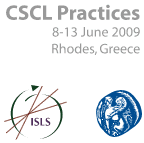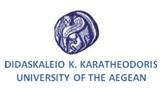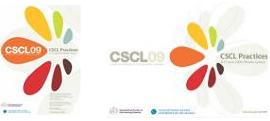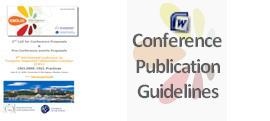
Program
Pre-Conference Events Program
Tutorial:
Multi-level Analysis
Ulrike Cress, Knowledge Media Research Center, Konrad-Adenauer Str., 40, 72072 Tuebingen, Germany, u.cress@iwm-kmrc.de
Description of the Event
In CSCL we often have to handle data with a multi-level structure (Cress, 2008). These quantitative data describe individuals, but these measures are statistically not independent, because the individuals interacted in groups and influence each other. The workshop shows why standard statistical procedures like ANOVAS and correlations will not work with these data. The workshop will present some basic ideas of multi-level modeling (Bryk & Raudenbush, 1992; Burstein, Kim & Delandshere 1989) and explain the logic behind it.
Multi-level models would be an adequate method for dealing with many CSCL data, but the problem is that their application only makes sense with a large number of cases (Hox, 2002). In CSCL research we do not normally have such large samples. The aim of the workshop is to discuss how we can deal with the multi-level structure of the data, on the one hand, and the relatively small samples on the other. From the statistical point of view, there appears to be no "best" solution in this situation. But the workshop aims to make researchers aware of multi-level problems, and motivate them to think about designs which can be adequately analyzed.
The event addresses both people with and without experience in multi-level analysis.
Description of the Event Format
The event will start with a presentation about the problems of nested data. It will show which problems occur when these data are analyzed inadequately. It will then show how multi-level modeling deals with such data.
The second part will be highly interactive. Here participants are asked to present their data and to describe their designs. The workshop gives participants an opportunity to discuss their solutions with the group and to find strategies to handle the data adequately.
Special Procedures
Participants are asked to present their own work in order to discuss their methodological solutions with the group. For it each participant should prepare a short (1-2 page) description of the study and a short presentation (5-10 Minutes). The description should be sent to u.cress@iwm-kmrc.de by May 15th.
References
Bryk, A. S., & Raudenbush, S. W. (1992). Hierarchical linear models. Newbury Park, CA: Sage.
Burstein, L., Kim, S. S., & Delandshere, G. (1989). Multilevel investigations of systematically varying slopes: Issues, alternatives, and consequences. In D. Bock (Ed.) Multilevel analysis of educational data (pp. 233-279). San Diego: Academic.
Cress, U. (2008). The need for considering multi-level analysis in CSCL research - An appeal for the use of more advanced statistical methods. International Journal of Computer- Supported Collaborative Learning, 3, 69-84.
Hox, J. J. (2002). Multilevel analysis: techniques and applications. Mahwah, NJ: Lawrence Erlbaum Associates.
Tutorial Date: Tuesday Morning, June 9th, 2009
.
.
.
.
.
.
.
.
.
.
.
.
.
.











